As a WordPress website owner, you may need to create exclusive content for members, subscribers, or a specific group of users from time to time. One way to create member’s only content is by using a WordPress membership plugin.
The only problem is that most membership plugins come with a full suite of features. However, if you’re looking for a simple solution for content restriction, you’d be better off going with something much simpler.
With this in mind, in this article, we’ll explain how you can create member’s only content in WordPress without a membership plugin.
Table of Contents
Why you don’t need a full-blown membership plugin
Many times, WordPress website owners end up installing heavy, feature-rich membership plugins only to use one or two simple features (like content restriction). In fact, there are many scenarios where a WordPress membership plugin isn’t the right solution.
For example, you may not need half of the features that come with membership plugins. These are typically complex (or specialized) features like drip-feeding content, creating quizzes and assignments, CRM integrations, and certificates.
Or, maybe you’re in the market for a lightweight plugin that won’t create conflicts with the plugins you’re already using. Membership plugins tend to create conflicts with (or be incompatible with) loads of themes, page builders, and plugins.
It’s also worth mentioning that setting up a membership plugin and getting your site’s visitors used to the new user flow isn’t always easy. Membership plugins often require users to create member profiles or subscribe to a plan to get started. And, finally, a membership site might not be ideal for you if you create content for both general viewers and members. Managing user access levels on the back-end isn’t easy. Since you’ll likely be publishing content regularly, you’d want to make this as simple as possible for yourself.
When you might need an easy way to create member’s only content
There are many scenarios when you might need an easy way to create member’s only content rather than messing around with complex membership plugins.
Scenario #1: Simple content restriction
A full-blown WordPress membership plugin isn’t ideal for simple content restrictions. This is when you want to grant access to members who have either the correct password, user role, or unlock link.
For example, if you’re thinking of restricting access to certain blog posts or articles, recipes, or in-depth tutorials, you would simply need to create a password-protected area.
Scenario #2: Online courses and training programs
If you’re thinking of launching an online course or training program, you might want to go with a simple plugin solution to test out your minimum viable product (MVP) and validate your idea.
The simple way to implement this is by restricting access to only the course video. This way, you can also offer a free course preview to all visitors encouraging them to check out the full version.
Aside from restricting access to video content, you can also place download links for worksheets or assignments in the password-protected area.
Scenario #3: Membership content
If you publish exclusive content for your site’s members or would like to share exclusive resources with them, setting up a simple password-protected area on your WordPress website is all you really need.
With this simple implementation, you can restrict user access to video content, worksheets, assignments, and exclusive member’s only resources like forums and discussion boards.
Scenario #4: Exclusive downloadable resources
Sometimes, you just need an easy way to provide members access to downloadable resources. For example, by entering the correct password or clicking on a special unlock link.
This is also great for website owners that want to build an email list. For example, you can offer exclusive downloadable resources in exchange for email addresses. Some common examples of content upgrades and exclusive downloadables include:
- Infographics
- Templates
- Design resources
- Checklists
How to create member’s only content in WordPress using Passster
Passster is a lightweight password-protection plugin for WordPress that lets users restrict access to content in several different ways. In this section, we’ll walk you through a step-by-step tutorial on how to create member’s only content in WordPress using Passster.
To get started, you’ll need a WordPress website with some content that you’d like to restrict access to.
Step #1: Install and activate the Passster plugin
Log into your WordPress website and head over to Plugins > Add New. Search for Passster and install and activate the Passster – Password Protection plugin to your website.

The free version of the plugin lets you restrict access to content using a single password. If you’d like to create multiple passwords to unlock restricted content or create an encrypted link to give members direct access to protected content, you’ll need to get the premium version instead.
Step #2: area of full-page protection
Now you can decide if you want to protect your content with an area (only parts of a page) or if you want to protect entire pages.
You can find all about area protection here.
Due to the fact that we are building a membership website we use the page protection instead. When editing a page (or post) you find a metabox called Passster (Page Protection) which contains every option you can use:

Activate Protection
You can activate and deactivate the protection for the current page. This is useful if you want to set up everything up first before activating the real protection.
Protection Type
This directly influences the following settings. For example, when choosing a “Password” a password field will appear below, but when you are selecting “Captcha” there are no additional settings to be done.
The following protection types are available:
- Password
- Passwords
- Password Lists (more on that later)
- Captcha
- Google ReCaptcha
User Restriction
Additionally, to the password protection, you can unlock the content for certain users or user roles automatically as it’s done in most membership plugins these days. Unregistered users must still provide the correct password to unlock the content.
Texts:
Here you can modify the details of the password form like the headline, instructions text, placeholder, and the button.
ID:
This is a special one. If you want to use multiple password forms on one page (with shortcode or within a widget for example) every form requires a unique ID otherwise only the first match will be unlocked.
When you have filled out your details and activate the protection you are almost done with the setup, but let’s a look into the settings of Passster.
Step #3: Configure the Options
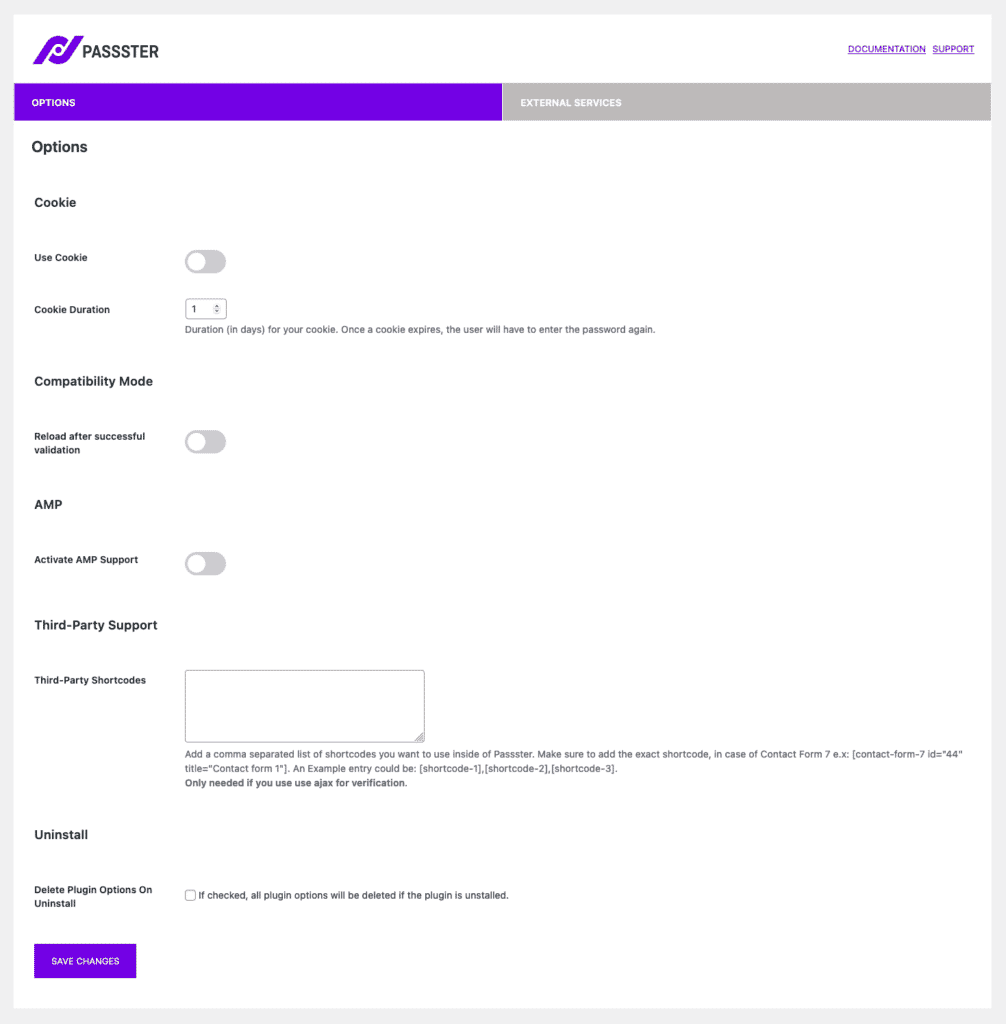
Cookie:
This is the most important setting when building a membership site with Passster. Activate it and you can share passwords on multiple forms on multiple pages. Sound complicated? It’s not! I give you a quick example:
You have 2 pages protected with Passster – both with the password “123”. When a user unlocks one password form with the correct password, the password is stored as a cookie in the user’s browser. When he now visits the other protected page it automatically unlocks the content for him – how cool is that!
You can also setup different protected areas with that. Another example you have 4 pages, 2 with “123” and 2 with “345”. You gave some users the first password and some users the other password, so everyone can unlock the content he is allowed to but not everything (maybe you have different pricing plans for example).
Reload after successful validation:
This comes in handy when using a Page Builder where the default ajax verification does not work or results in some layout shifts. Activate it and you can be sure that your layout is rendered perfectly.
Third-Party Shortcodes:
Let’s say you have a form included in a protected page with a shortcode like it’s done with Contact Form 7. When using ajax (without the reload) you need to pre-register the shortcodes within these setting to make them work. You can read more about that (with an example) here.
Step #4: Unlock via link (optional)
Besides giving the user the option to add the correct password to get the content you can also create encrypted links that you can send to your users to automatically unlock protected pages (or areas).
You will find another metabox called Passster (Link Protection) when editing a page:
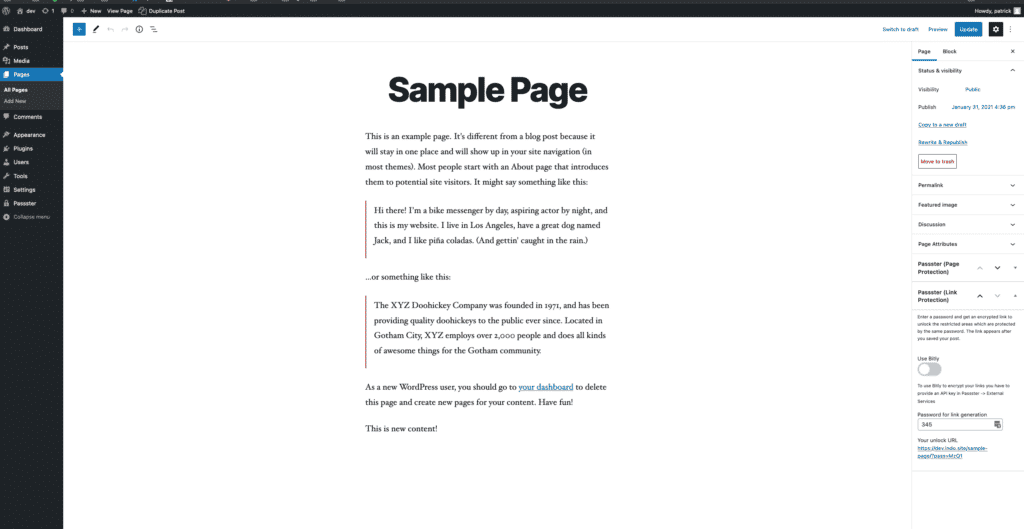
Bitly
This is optional, but you can use bitly to shorten the entire URL. Just make sure you added the necessary access token for that within Passster->Options->External Services:
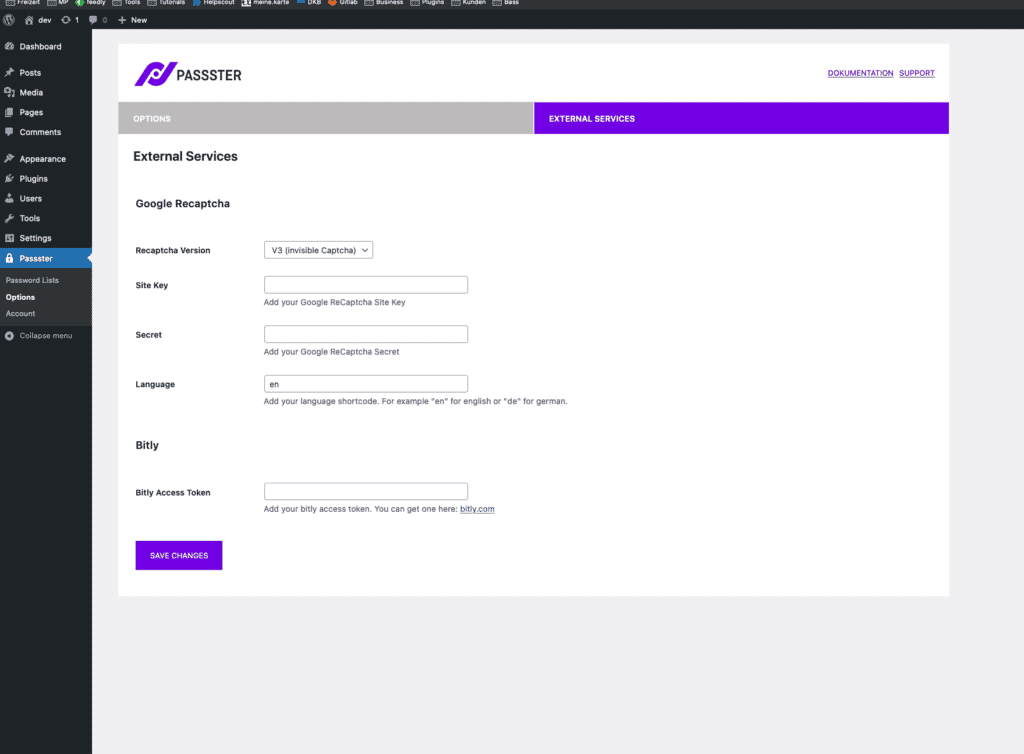
Password for link generation
This should be the same password as you have used before. Why adding it twice? Well, maybe you are not using a simple password and a password list instead, this would result in a pretty long URL which will not be as easy to handle when sharing.
Once you save your page the link is generated and will be available down below:
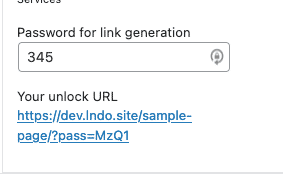
Now we are done with the setup. When you visiting the page you should see the password form you have configured:
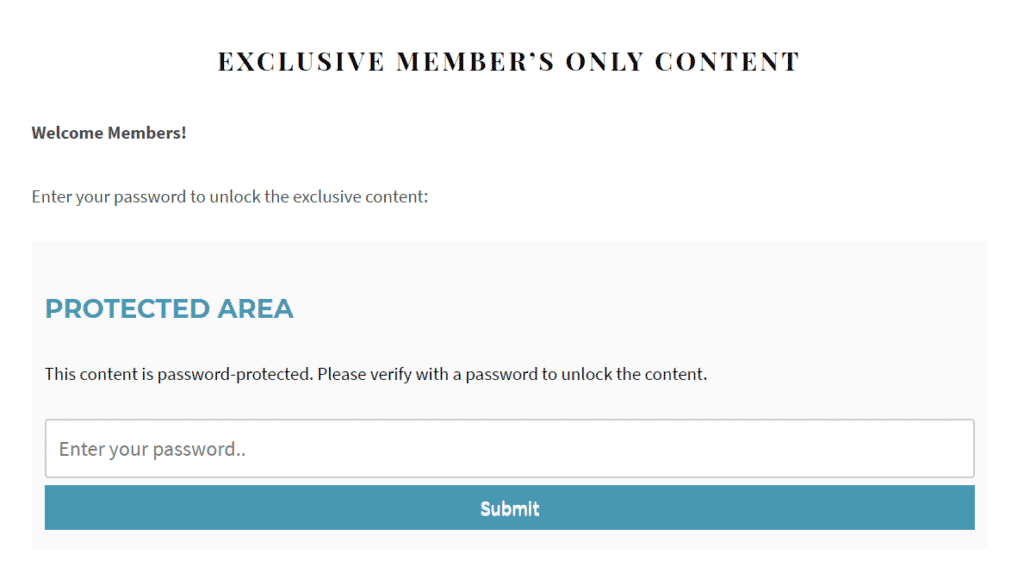
When a member accesses your site and enters the correct password, they will be able to unlock the content:
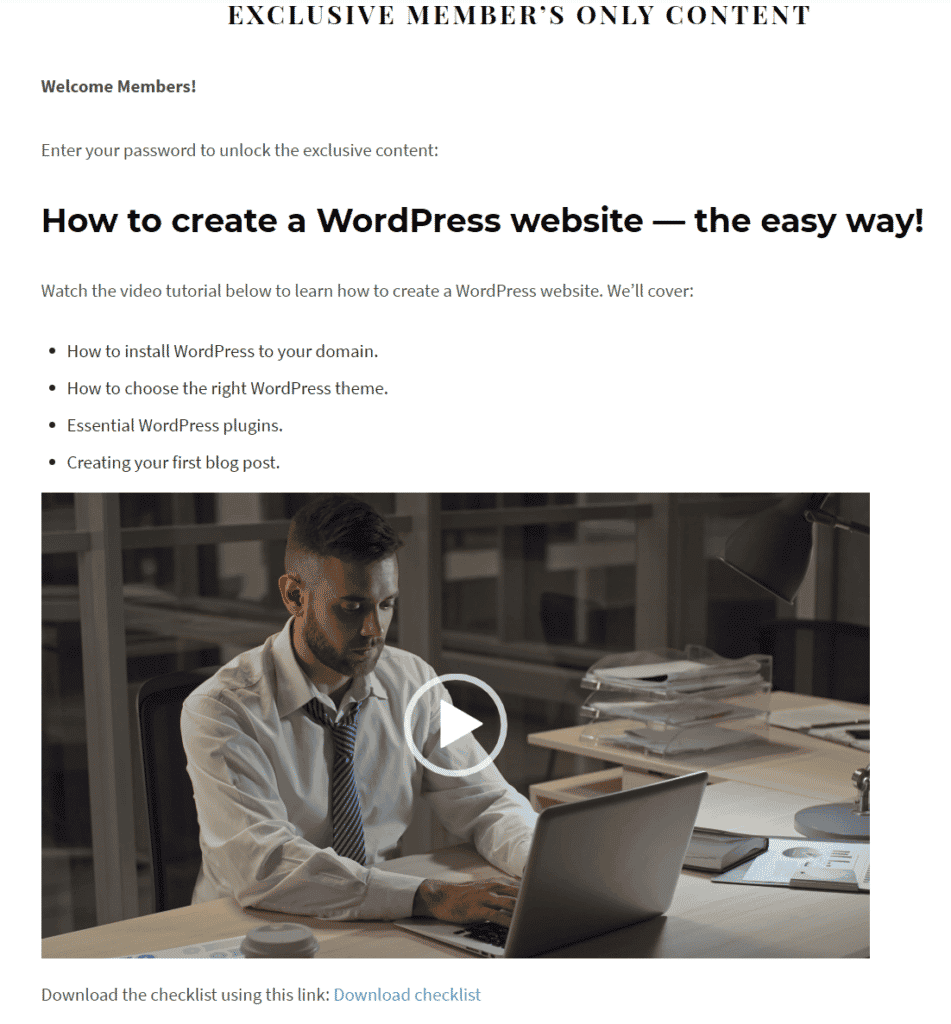
Conclusion
Passster lets you create password-protected areas on your WordPress website so you can create member’s only content without using a membership plugin.
You can choose to create a single password or multiple passwords to unlock the content. Alternatively, it also lets you grant access to restricted content via an encrypted unlock link or by user role (or selected users). Which content restriction method will you use to create member’s only content for your members? Let us know in the comments section below!
Passster
Protect your entire website, entire pages, or just parts of your content with one or more passwords.